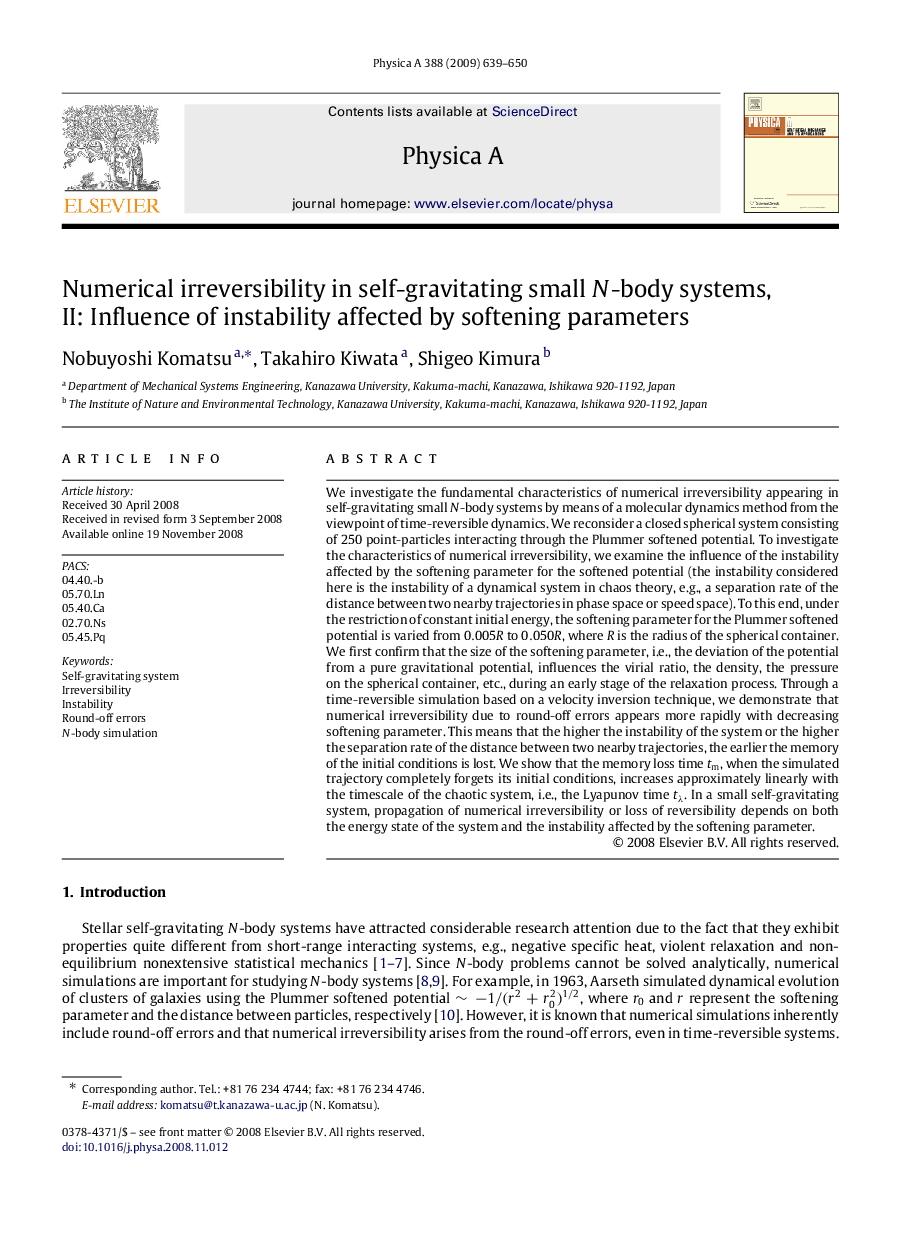| Article ID | Journal | Published Year | Pages | File Type |
|---|---|---|---|---|
| 978662 | Physica A: Statistical Mechanics and its Applications | 2009 | 12 Pages |
Abstract
We investigate the fundamental characteristics of numerical irreversibility appearing in self-gravitating small N-body systems by means of a molecular dynamics method from the viewpoint of time-reversible dynamics. We reconsider a closed spherical system consisting of 250 point-particles interacting through the Plummer softened potential. To investigate the characteristics of numerical irreversibility, we examine the influence of the instability affected by the softening parameter for the softened potential (the instability considered here is the instability of a dynamical system in chaos theory, e.g., a separation rate of the distance between two nearby trajectories in phase space or speed space). To this end, under the restriction of constant initial energy, the softening parameter for the Plummer softened potential is varied from 0.005R to 0.050R, where R is the radius of the spherical container. We first confirm that the size of the softening parameter, i.e., the deviation of the potential from a pure gravitational potential, influences the virial ratio, the density, the pressure on the spherical container, etc., during an early stage of the relaxation process. Through a time-reversible simulation based on a velocity inversion technique, we demonstrate that numerical irreversibility due to round-off errors appears more rapidly with decreasing softening parameter. This means that the higher the instability of the system or the higher the separation rate of the distance between two nearby trajectories, the earlier the memory of the initial conditions is lost. We show that the memory loss time tm, when the simulated trajectory completely forgets its initial conditions, increases approximately linearly with the timescale of the chaotic system, i.e., the Lyapunov time tλ. In a small self-gravitating system, propagation of numerical irreversibility or loss of reversibility depends on both the energy state of the system and the instability affected by the softening parameter.
Keywords
Related Topics
Physical Sciences and Engineering
Mathematics
Mathematical Physics
Authors
Nobuyoshi Komatsu, Takahiro Kiwata, Shigeo Kimura,
